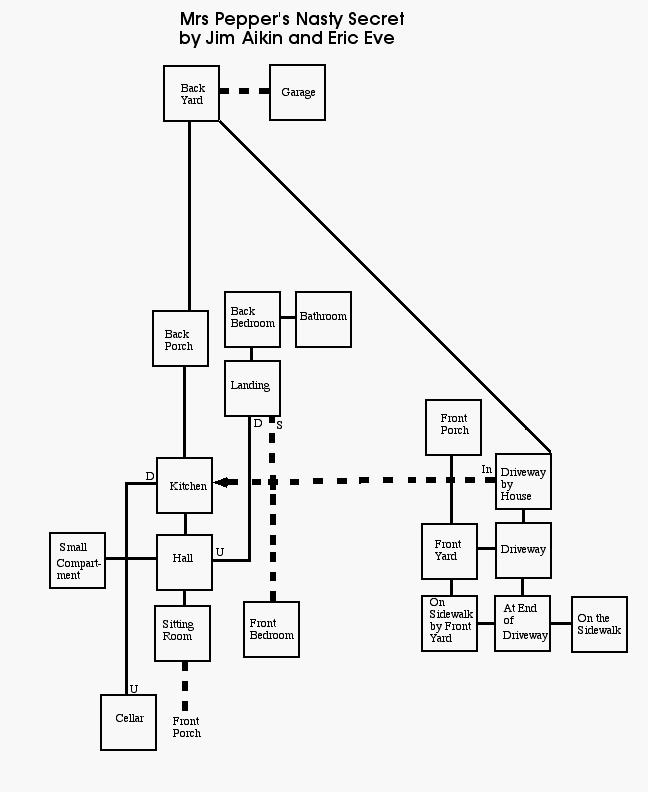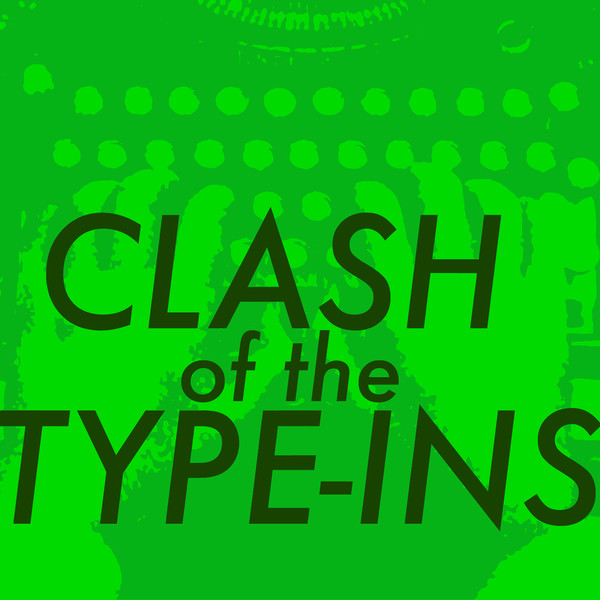Interactive fiction, or IF, is a kind of story in which the reader plays the part of an important character, deciding, most of the time, what the character will do. By typing ordinary English sentences at a computer keyboard, the reader or, frequently, a group of readers, decide where the main character will go, what objects he or she will pick up and use, how he or she will solve problems, and how he or she will behave toward other characters. An interactive fiction story is a lot like a video game in words.
Often, when people talk about interactive fiction, also known as IF or adventure gaming, they are thinking about stories that are told mainly through words, not pictures. Sometimes, though, people use the term “graphical interactive fiction” when they mean stories that are told largely through pictures. Famous examples of graphical interactive fiction include Myst and Riven.
At other times, people talk about “choice-based interactive fiction.” In this kind of story, the reader makes choices by clicking on links, not by typing commands in ordinary language.
This website is about the kind of interactive fiction that uses mostly words to tell its story. It’s also about the kind in which the reader types in commands, rather than clicking on links. Typing in commands allows the reader to have more freedom in deciding what her or she wants to do. It lets the writer write in a more open-ended way, too.
Would you like to try some IF right now? If your browser is Java-enabled, you can try out lots of stories online, including a really good one called Mrs. Pepper’s Nasty Secret. One of its Web pages is at http://ifdb.tads.org/viewgame?id=dcvk7bgbqeb0a71s. Just click on the “Play Online” link to start. You can get hints by typing “hint,” and helpful maps appear below. However, you may want to read about communicating with interactive fiction before you attempt one of the stories. You’ll find a section about communicating with IF later on in this section of the website.
Communicating in Interactive Fiction
What’s wrong with this picture? If you’re tried interactive fiction and hated it, you may think you know. Actually, may kids get off to bad start with IF when someone says, “Look at this great program! All you have to do is type in what you want to do. It’s just like reading a novel!” But when you try a story yourself, you seem to get nothing but error messages that make very little sense.
In truth, even the best IF programs can deal with only a few kinds of English sentences. However, interactive fiction authors are really trying to help. Sometimes, the help is built into the story itself. For example, the story might display this text early on:
“Type ‘about’ for more information about this story.”
At other times, the help, or some of it, will be in separate the instructions that come with the story. If you use these aids, you’ll find communicating with IF programs much easier.
In general, try these suggestions. All works of interactive fiction, even the very earliest ones, can recognize sentences like “take coin,” which the story will consider to mean, “I want to take the coin.” The IF stories recommended here can recognize many more kinds of sentences, but experienced readers often keep the two-word pattern in mind, anyway. For example, IF stories can now recognize “Take the gold coin,” “Take the gold coin from the fountain,” or “Take the gold coin and give it to the librarian.”
In addition, most works of IF can recognize at least some simple questions that begin with “who,” “what,” or “where.” Most stories also use a variety of useful abbreviations, including “g” for “again,” “z” for “wait,” “i” for “inventory of what I’m carrying,” “l” for “look,” “n” for “go north,” “s” for “go south,” and “u” for “go up.”
Conversing with other characters in IF can be lots of fun, but it can be frustrating, too, unless you keep in mind several patterns that most of the stories can understand. Directly talking to a character with a command will often work; for example, “Miss Voss, tell me about the magic stone.” Also, a reader can often make progress by asking or telling a character about something, as in “Ask the bartender about the vampire.” Frequently, a story will interpret a single word to mean that the character says the word. In other words, “hello” will often mean the same as “say ‘hello,’” though it is necessary to type out ”say hello.” “Talk to Mrs. Pepper (or whatever the character is called)” also works in many stories.
Getting Un-Stuck
Another objection? You learned to communicate with the program just fine but soon became “stuck” in trying to solve a problem and finally decided to give up? Well, that sort of thing happens to all of us. In fact, figuring out tough problems is part of the fun of IF. And, as a matter of fact, few readers get through a whole piece of interactive fiction without help from someone else. A problem that seems impossible to me may be easy for you, and so interactive fiction usually ends up as a social activity.
What if there’s no one available to work with? Then use the hints and “walkthroughs” that you can find on the World Wide Web, especially at the Interactive Fiction Database (http://ifdb.tads.org). A Google or DuckDuckGo search for “Mrs. Pepper walkthrough” will often work, too. But try not to look at the hints until you’ve really tried to solve the problem yourself.
If you’d like just right amount of hinting, from people who know how to avoid giving away too much, try the Interactive Fiction Forum at http://www.intfiction.org/forum/.
Here are some Web addresses for walkthroughs for stories recommended on this site:
Wishbringer – http://www.gamefaqs.com/pc/564461-wishbringer/faqs/13727
Moonmist – http://www.gamefaqs.com/pc/564468-moonmist/faqs/1619
Arthur: the Quest for Excalibur – http://www.ifarchive.org/if-archive/infocom/hints/solutions/arthur.txt
A Bear’s Night Out – http://ifarchive.jmac.org/if-archive/games/competition97/inform/bear/bear.sol
The Magic Toyshop – http://ifarchive.giga.or.at/if-archive/solutions/magictoy.sol
Lost Pig – http://ifarchive.giga.or.at/if-archive/games/competition2007/zcode/lostpig/walkthru.txt
The best way to learn about IF is to read a story with someone who has experience with interactive fiction. But you may not know anyone who’s like that. Still, you probably do have a way to listen to experienced readers as they make their way through several IF stories. This free-and-easy teacher takes the form of a very funny podcast called “Clash of the Type-ins” (http://rcveeder.net/clash/) In each episode, hosts Ryan Veeder and Jenni Polodna, both experienced IF readers and writers, read a story together. Most episodes include a third participant, the author of the story that’s being read.
From the “Clash” website, here’s a list of some of the best episodes for kids. You can’t go wrong with any of them.
EPISODE ONE: You’ve Got a Stew Going! (February 6, 2014)
In this, the first episode, Jenni Polodna plays Ryan Veeder’s first game, a game about rats. Jenni says the word ‘titular’ kind of a lot. If horses ran the world, keyboards would be weird.
EPISODE THREE: It (April 16, 2014)
Jenni and Ryan play Emily Boegheim’s It. It is the name of the game. Cultural gaps are bridged. Murder is considered.
EPISODE TEN: Bronze (January 10, 2015)
Emily Short brings us one of her fractured fairy tales and Ryan works himself into a fanboy frenzy. Jenni tries to remember Dom DeLuise’s first name. Shameful lunchtime secrets are revealed. This episode includes some interesting discussion of IF in general.




